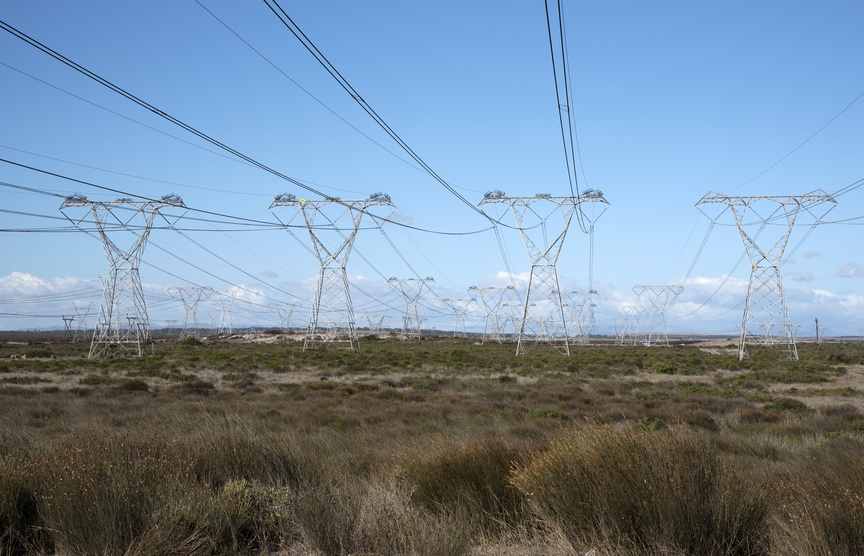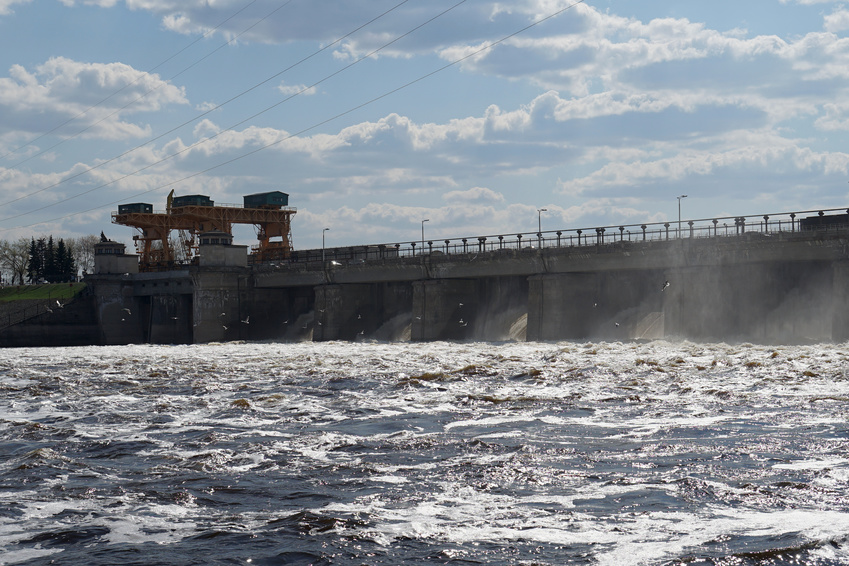Microgrids are simpler and easier to finance than complex main-grid projects

MELKBOSSTRAND NORTH OF CAPE TOWN SOUTH AFRICA – APRIL 2016 – Power lines feed electricity to the national grid from the Koeberg nuclear power station
Clusters of gas-fired turbines, big dams, and geothermal projects in Sub-Saharan Africa tend to have very complex financing structures, often with the inevitable involvement of institutional lenders and development finance institutions. In addition, they also often involve offshore financing, as well as complex debt/equity structures from local banks. These elements combine to add more layers of complexity to main grid projects. Microgrids, however, are within the reach of smaller organizations.
The possibility of financing microgrid solution using simpler models that maintain profitability and quality is a strong argument for proponents and an advantage for project promoters. For stakeholders attracted to the relative simplicity of financing remote grids in regions of very high demand, the opportunities remain enormous. Not that financing small and remote grids is easy, but juxtaposing this option with the requirements and typical funding life-cycle of main grid projects highlights major advantages.
The downside to privatization and main-grid growth
Nigeria’s power sector privatization exercise, completed in 2013, saw state-owned Power Holding Company of Nigeria (PHCN) unbundled into several power-generating and distribution companies. These new firms were acquired by local companies in partnership with some foreign entities capable of financing the development and maintenance of the huge assets. In the years following the acquisition, hundreds of millions of dollars were invested into these facilities. The ensuing development and financing efforts experienced frequent delays based on the size of the projects and funds required as well as prolonged periods for due diligence attributable to the complexity of the project.
The necessity of raising such funds through syndication meant significant time must be allocated to tie the deals up. In addition, projects were mainly promoted not by single firms but consortia, sometimes complex consortia involving multinationals from diverse regions of the world. This financing and ownership structure within main-grid projects, with its inherent complexities and inefficiencies, is also mirrored in the projects’ management structure, from board to field operation teams.
These elements are natural features of main grid projects and other large-infrastructure financing, and they present a sharp contrast to some of the financing experience of microgrid projects, especially in Africa. The rigors and the required time for financing microgrids are much lower than those of main grids and therefore offer a competitive advantage for project promoters. The lower investment required to execute microgrid project increases the possibility of projects having single financiers and consequently lean stakeholders’ structures. Even in projects where financing is syndicated, the syndicates are much simpler as well.

The bankability of microgrids is further boosted in nations where government intervention funds, credits, or sovereign guarantee are available. Risks can be further mitigated by World Bank’s MIGA (Multilateral Investment Guarantee Agency). In addition, microgrids are increasingly appealing to traditional financial institutions in emerging markets. The decade-long bias from some of these financiers is quickly being eroded as more profitable microgrid renewables, such as small-scale wind and solar farms, come on-stream and continue to operate successfully. Commercial viability, ease of operation, and profitability are proven achievable goals.
RE a trend for African projects
Africa has several upcoming renewable projects (both main grid and microgrid) that are changing the landscape for microgrid financing.
“Renewable energy remains a nascent trend within the African energy space,” explains United Bank for Africa (UBA) group CEO Phillips Oduoza. “Solar energy has garnered the most traction in the renewable energy space due to the bankability of the projects and lower cost of production and the abundance of the input resource within the continent. I am of the opinion that renewable energy projects that are bankable will continue to attract funds from financial institutions.”
Should the trend of improvements in the efficiencies of many microgrid solutions and technologies continue along with lender enthusiasm, a huge gain will likely occur in the bankability of microgrids to Africa’s advantage.
